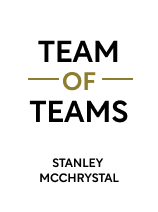

This article is an excerpt from the Shortform book guide to "Team of Teams" by Stanley McChrystal. Shortform has the world's best summaries and analyses of books you should be reading.
Like this article? Sign up for a free trial here .
What is resilient thinking? How do you make a system resilient?
The resilient thinking approach examines how complex interconnected systems can be managed in the face of shocks and unexpected disruptions. Making a system resilient comes from linking its parts in a way that makes it possible for them to reconfigure and adapt.
Read about resilient thinking and how it has been applied to real-world problems.
What Is Resilient Thinking?
In the book Resilience Thinking, authors Brian Walker and David Salt define resilience as a system’s ability to withstand disruption or shock while remaining intact and continuing to perform.
Another way to describe resilient systems is antifragile—they not only withstand shocks but also may benefit from them, like immune systems that can grow stronger with exposure to infectious agents. In contrast, fragile systems are damaged or destroyed by shocks.
In an increasingly complex and challenging world, being able to withstand shock is so important that it’s drawn the interest of researchers and planners in a variety of disciplines from psychology to engineering. Resilient thinking has also become a trend in management theory and practice as organizations confront complex challenges. Resilient managers accept the inevitability of unpredictable threats. Rather than developing complicated plans to counter specific threats, they work to design systems that can take a hit and adapt.
For example, in recent years, Dutch engineers have made resilience instead of flood-proofing their objective in handling water.
- After a massive 1953 storm and tide overwhelmed dikes, authorities at first tried to predict and control where water would go with a huge containment project completed in 1997. But the system’s channels actually caused water to flow higher and faster, making sea flooding worse. Also, the system couldn’t handle heavy rainfall and snowmelt in the Alps that created flooding from the opposite direction (rivers couldn’t absorb the extra water).
- So engineers shifted their goal from control and containment to resilience—withstanding flooding. They lowered dikes to allow rivers to spread out, and they used farmland as floodplains to handle extra water until the rivers could absorb it.
Resilient and Robust
The ideal system for functioning in a complex environment where there are many types of unforeseen disruptions is one that’s both resilient and robust—that is, one that’s both adaptable and strong.
For example, a coral reef is resilient but not robust. If a reef is large enough, it can survive being partially destroyed by a hurricane by regrowing (resilience). But a reef isn’t robust or strong enough to regrow if it suffers too much damage too fast.
Making a system robust involves strengthening its parts while making it resilient comes from linking the parts so they can reconfigure and adapt. Though you can’t control the behavior of storms at sea, you can build a boat that’s robust, and train a resilient crew to adapt to the conditions.

———End of Preview———
Like what you just read? Read the rest of the world's best book summary and analysis of Stanley McChrystal's "Team of Teams" at Shortform .
Here's what you'll find in our full Team of Teams summary :
- How General Stanley McChrystal transformed the U.S. Joint Special Operations Task Force
- What teams that operate well can offer to an organization
- How the team of teams organizational model helped bring down a major Al Qaeda leader






